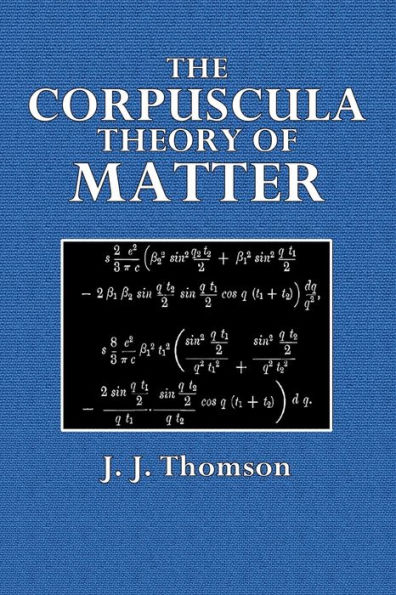The Corpuscular Theory of Matter
It is stated in the preface that this book is an expansion of the series of lectures delivered at the Royal Institution in the spring of 1906. The book consists of seven chapters which deal respectively with the origin and properties of corpuscles, the two different corpuscular theories of metallic conduction, and in the number and arrangement of corpuscles in the atom. In the first chapter corpuscles in vacuum tubes are considered, and 'evidence is given showing that the corpuscles act as carriers of electricity, and that a positively electrified body owes its positive electrification to a defect of corpuscles. Also a positive charge is always associated with a mass comparable to that of the hydrogen or helium atom, whereas the corpuscles appear always to have the same mass, viz., that of about 1/1700 the atom of hydrogen. As is well known, the positive ions are given off by radium, and constitute the "X" rays. These have been examined by Rutherford and others, and the ratios of - e/m measured. The second chapter deals with the origin of the corpuscle, and here all the arguments are carefully set forth, and these tend to show that its mass is wholly electrical in origin. The evidence for the existence of corpuscles afforded by the Zeeman effect is discussed in a most luminous manner.
1103470599
The Corpuscular Theory of Matter
It is stated in the preface that this book is an expansion of the series of lectures delivered at the Royal Institution in the spring of 1906. The book consists of seven chapters which deal respectively with the origin and properties of corpuscles, the two different corpuscular theories of metallic conduction, and in the number and arrangement of corpuscles in the atom. In the first chapter corpuscles in vacuum tubes are considered, and 'evidence is given showing that the corpuscles act as carriers of electricity, and that a positively electrified body owes its positive electrification to a defect of corpuscles. Also a positive charge is always associated with a mass comparable to that of the hydrogen or helium atom, whereas the corpuscles appear always to have the same mass, viz., that of about 1/1700 the atom of hydrogen. As is well known, the positive ions are given off by radium, and constitute the "X" rays. These have been examined by Rutherford and others, and the ratios of - e/m measured. The second chapter deals with the origin of the corpuscle, and here all the arguments are carefully set forth, and these tend to show that its mass is wholly electrical in origin. The evidence for the existence of corpuscles afforded by the Zeeman effect is discussed in a most luminous manner.
7.99
In Stock
5
1

The Corpuscular Theory of Matter
182
The Corpuscular Theory of Matter
182Paperback
$7.99
7.99
In Stock

Product Details
| ISBN-13: | 9781663516701 |
|---|---|
| Publisher: | Dapper Moose Entertainment |
| Publication date: | 06/12/2020 |
| Pages: | 182 |
| Product dimensions: | 6.00(w) x 9.00(h) x 0.42(d) |
About the Author
From the B&N Reads Blog
